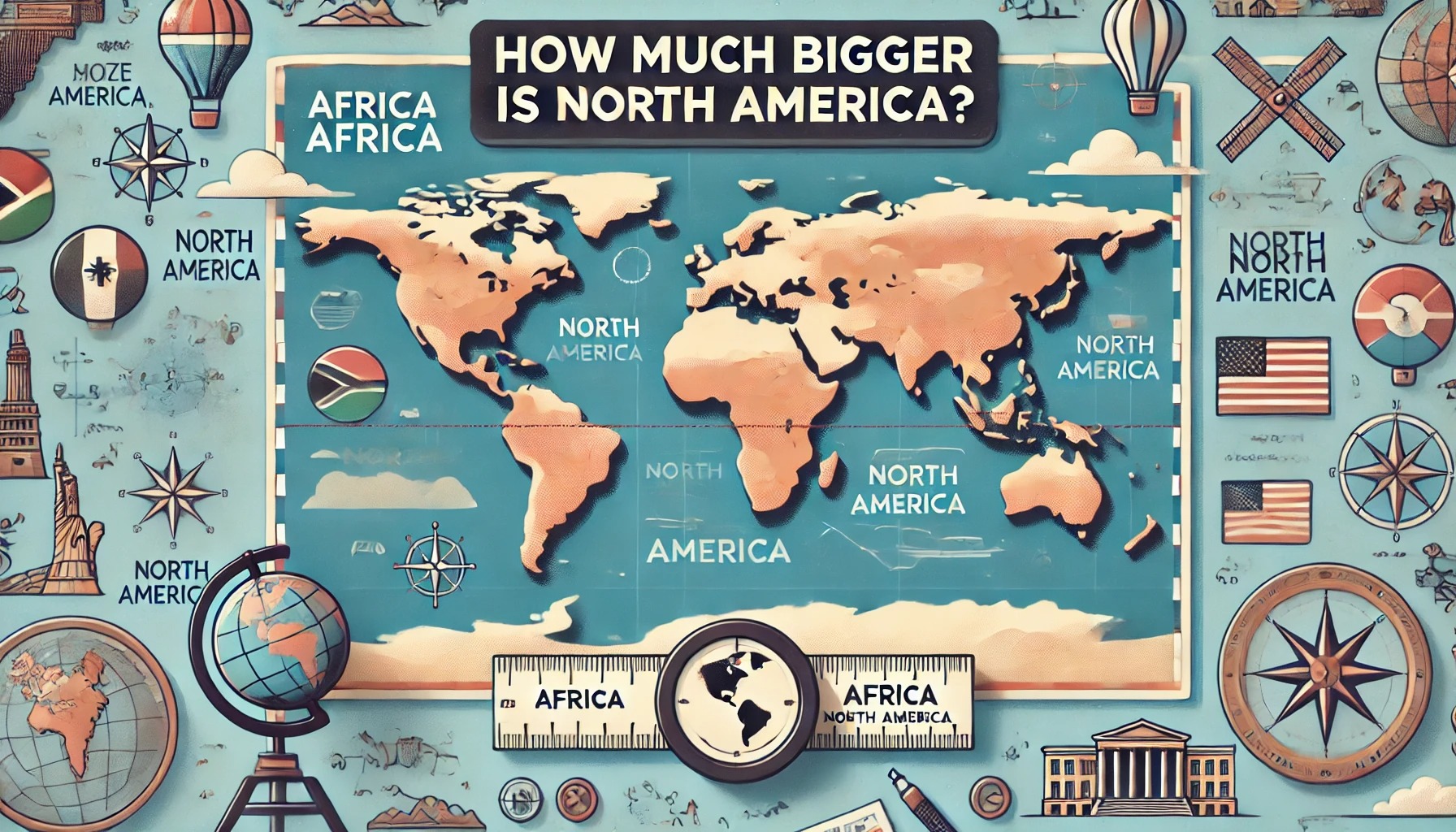Africa and North America are two vast continents, each unique in its own right. But when it comes to sheer size, how much bigger is Africa than North America? This question often arises among geography enthusiasts and travelers alike. Africa, known for its rich cultural diversity and varied landscapes, spans an impressive area that dwarfs many other continents. North America, home to the United States, Canada, and Mexico, is also expansive but must match Africa’s enormity. In this article, we’ll dive deep into the geographical dimensions of these two continents, comparing their land areas, populations, and ecological diversity to understand just how much bigger Africa truly is.
How Much Bigger Is Africa Than North America?
Africa is significantly larger than North America. Africa covers approximately 30.37 million square kilometers, making it the second-largest continent, while North America spans about 24.71 million square kilometers. This means Africa is about 23% larger than North America. The substantial size difference highlights Africa’s vast and diverse landscapes compared to North America’s varied but smaller expanse.
Geographical Size Comparison
Africa’s Vastness
Africa is the second-largest continent in the world, covering approximately 30.37 million square kilometers. This immense size allows it to host a wide range of ecosystems, from the Sahara Desert in the north to the dense rainforests of Central Africa and the savannas of the south. Its geographical diversity is unparalleled, with significant landforms such as Mount Kilimanjaro and the Nile River.
North America’s Dimensions
In contrast, North America, while large, covers about 24.71 million square kilometers. This continent includes vast countries like the United States and Canada, known for their diverse climates and terrains. From the icy landscapes of the Arctic in Canada to the tropical regions of Mexico, North America offers a varied but smaller geographical expanse compared to Africa.
Population Density and Distribution
Africa’s larger land area supports a rapidly growing population, which currently exceeds 1.3 billion people. This population is distributed unevenly across the continent, with high densities in countries like Nigeria and Egypt. North America, with a population of around 579 million, has a more balanced population distribution, though large urban centers like New York and Mexico City stand out.
Ecological Diversity
The ecological diversity in Africa is immense due to its size. The continent boasts numerous biomes, including deserts, rainforests, savannas, and mountains, each supporting unique flora and fauna. North America also has a rich biodiversity, with its array of ecosystems, but the continent’s smaller size limits its ecological variety compared to Africa.
Cultural Richness
Africa’s cultural landscape is as diverse as its geography. With thousands of ethnic groups and languages, the continent is a tapestry of cultures and traditions. North America, though culturally rich, largely reflects the influences of its colonizers and indigenous peoples, offering a different but equally fascinating cultural dynamic.
Breaking Down The Size Difference
Land Area and Geographical Features: Africa’s land area is about 30.37 million square kilometers, making it significantly larger than North America’s 24.71 million square kilometers. This difference highlights the vast geographical features of Africa, including expansive deserts, high plateaus, and extensive river systems. North America’s notable geographical features include the Rocky Mountains and the Great Lakes, but its land area remains smaller.
Population Distribution: Africa’s population density varies widely, with densely populated regions in the Nile Delta and sparsely populated areas in the Sahara. North America’s population distribution is more even, but urbanization is prominent in cities like Los Angeles and Toronto.
Climate Zones and Biodiversity: Africa’s large size results in a wide range of climate zones, from the arid Sahara to the tropical rainforests of the Congo Basin. This variety supports a rich biodiversity. North America, while also diverse in climate, ranging from the Arctic tundra to the tropical regions of Central America, does not match Africa’s biodiversity due to its smaller size.
Cultural Diversity: Africa’s cultural diversity is immense, with a multitude of languages, traditions, and ethnic groups. North America’s cultural diversity is largely shaped by immigration and the melting pot of cultures in countries like the United States, Canada, and Mexico.
Economic Impact: The size of Africa also influences its economy, with vast resources spread across the continent. North America, though smaller, has a robust economy due to its industrial and technological advancements.
Additional Perspectives On Size And Impact
Considering the size and impact of Africa versus North America opens up various dimensions of analysis. One perspective focuses on the historical context. Africa’s vast lands have been home to ancient civilizations, trade routes, and diverse cultures that have shaped human history. The continent’s size allowed for the development of isolated cultures, leading to the rich tapestry of traditions seen today.
From an economic viewpoint, Africa’s size is both an asset and a challenge. The continent’s vast resources, including minerals, oil, and arable land, offer immense economic potential. However, the sheer size also poses logistical challenges in terms of infrastructure development and resource distribution. North America, with its smaller size, has managed to build extensive infrastructure networks that facilitate economic growth and integration.
Environmentally, Africa’s size has significant implications. The continent faces diverse environmental challenges, from desertification in the north to deforestation in the central and southern regions. The large land area means that these environmental issues can vary widely and require localized solutions. North America, while facing its environmental issues, benefits from a more unified approach due to its smaller size and more developed infrastructure.
Conclusion
Africa’s size is a defining feature that sets it apart from North America. Covering approximately 30.37 million square kilometers, Africa is about 23% larger than North America. This immense size contributes to Africa’s rich ecological diversity, cultural heritage, and economic potential. While North America is expansive and diverse in its own right, Africa’s larger landmass and population create a unique and complex tapestry that continues to captivate and challenge the world.
FAQs
1. How Much Bigger Is Africa Compared To North America?
Africa is about 23% larger than North America, covering 30.37 million square kilometers compared to North America’s 24.71 million square kilometers.
2. What Are The Major Geographical Features Of Africa?
Major geographical features of Africa include the Sahara Desert, Mount Kilimanjaro, the Nile River, and the Congo Basin.
3. How Does The Population Of Africa Compare To North America?
Africa has a population of over 1.3 billion, significantly larger than North America’s approximately 579 million people.
4. Why Is Africa Considered More Biodiverse Than North America?
Africa’s larger size and varied climate zones support a wider range of ecosystems and species, contributing to its higher biodiversity.
5. What Are The Economic Implications Of Africa’s Size?
Africa’s vast land area and rich natural resources offer immense economic potential but also present challenges in terms of infrastructure and resource distribution.










